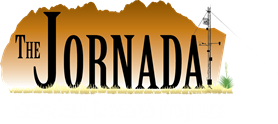| Abstract | Background/Question/Methods
The National Ecological Observatory Network (NEON) provides coincident hierarchical and ecologically meaningful measurements made at diverse U.S. ecosystems designed to answer key ecological questions at the national scale. Comprehensive soil properties are critical to characterize the geomorphic template at NEON sites from which the multi-scale and -taxa ecological observations arise. Physical and chemical soil properties play an important role in ecosystem function; spatial variation in soil physical and chemical properties is expected to influence ecosystem dynamics, nutrient cycling and myriad ecological processes. We report on a standardized, nationwide soil characterization effort at NEON terrestrial sites designed to describe how soils vary within and among NEON sites and to provide contextual information to support the long-term biodiversity sampling program. Sampling for the NEON soils characterization project was done at distributed plots at 46 of 47 terrestrial NEON sites via a modified stratified sampling design. In addition to broadly describing these soils data for the ecological community, we posed the following questions: How representative are NEON distributed soil pedons of soils in the surrounding landscapes?; and how does variability in soil properties within NEON sites range across the network?
Results/Conclusions
NRCS soil scientists collected and processed samples for 715 pedons constituting 3,246 horizons across the NEON network. Eleven of twelve soil orders were identified from the described pedons, with only Oxisols (a tropical soil) absent from the network. A total of 560 pedons were described from soil pits with the remaining 155 described from soil cores. Of the 3,246 horizons, 10.4% were classified as organic horizons, with the remaining mineral horizons comprising top soil (A, 26.8%), eluviated horizons (E, 6.8%), subsoil (B, 48.7%), parent material (C, 18%), and bedrock (R, 2.1%). The distributed pedons vary in how closely the descriptions correspond with existing Soil Survey data. Similarity in soils beyond NEON site boundaries ranged from highest coincidence in the Mid-Atlantic, Central and Northern Plains domains to lower correspondence in the western U.S. and Tundra and Taiga domains in Alaska. Alaska’s low correspondence is due to missing data where soils have not been mapped. High agreement areas have either more similarly described NEON soils (as in the mid-Atlantic region) or more homogenous mapped soils (as in the Great Plains). Regions of low correspondence between NEON soils and the surrounding area represent an opportunity for future exploration through NEON’s relocatable sites or collaborative projects with outside researchers.
|


